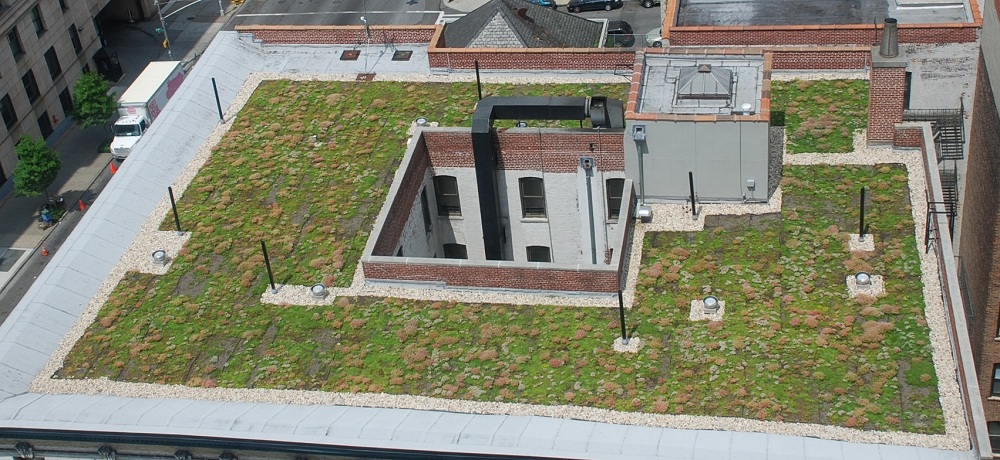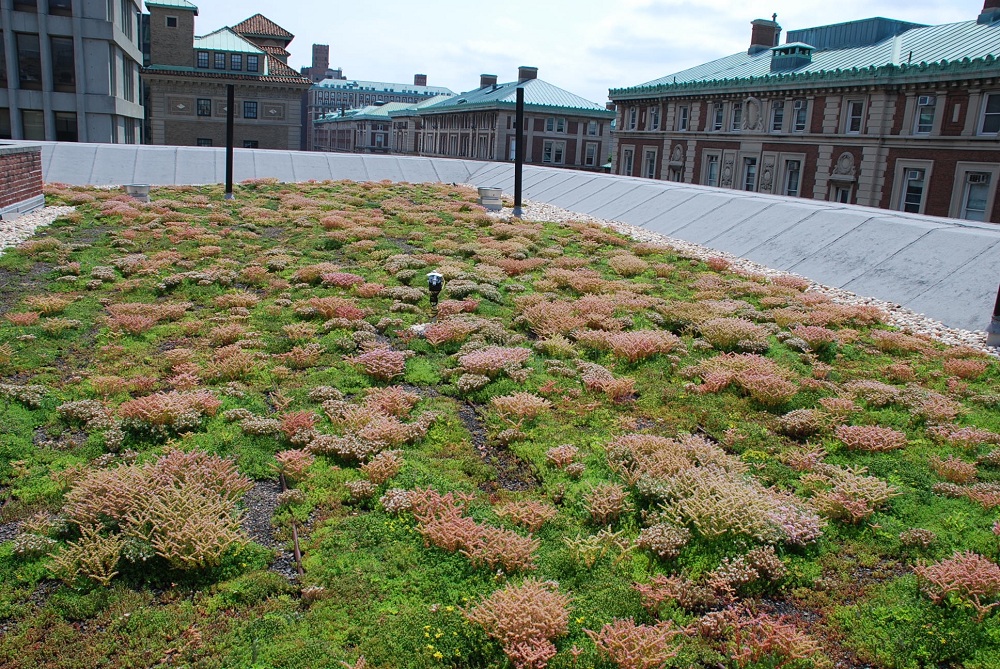How Does Your Rooftop Grow?

This Research in Action article was provided to LiveScience in partnership with the National Science Foundation.
Green roofs, such as those on the Columbia University campus, are rapidly gaining popular attention in the United States, recently becoming a high-profile component of sustainable building construction.
A green roof is an environmental system that incorporates plants on the roof's surface, with the intention of improving building insulation and energy efficiency, increasing biodiversity and aesthetic appeal, reducing urban storm water problems, and ultimately mitigating the urban heat island effect.
Green roofs incorporate layers of specialized waterproofing, root-resistant materials, drainage or water storage layers, and a growing medium (such as rocks or soil), all to support the carefully selected rooftop plants.

There are two main categories of green roofs, extensive and intensive. Extensive green roofs are generally less than 16 cm thick, planted with drought-resistant, hardy plants such as sedums, and suitable for placement on existing buildings. Intensive green roofs are greater than 16 cm thick, and are less common. They can support more diverse plant life than the thinner extensive roofs, but usually require that a building be designed to support the additional roof load.
Some U.S. cities are providing incentives for green roof construction, yet despite the claimed benefits for cities, details are lacking regarding the scientific understanding of how the roofs perform under natural conditions. As a result, researchers are still developing optimal strategies for the design and spatial distribution of urban green roofs.
To better understand urban green roof behavior, a team of researchers at Columbia University, including Patricia Culligan, Stuart Gaffin and Wade McGillis — in partnership with Columbia University's Office of Environmental Stewardship and the Earth Institute's Urban Design Lab — are instrumenting a suite of extensive green roofs throughout New York City.
Sign up for the Live Science daily newsletter now
Get the world’s most fascinating discoveries delivered straight to your inbox.
The researchers are measuring roof runoff, plant evapo-transpiration, carbon dioxide flux, temperature of the growing medium, moisture gradients, local particle counts, and roof albedo for roofs across the city (see real time data for the roof on the Columbia University Campus, in the Bronx, and in Queens).
Results from the research will provide scientific guidance to the green roof industry, government, local communities and other urban stakeholders on the development of green roof technologies, design and placement strategies.
Any opinions, findings, and conclusions or recommendations expressed in this material are those of the author and do not necessarily reflect the views of the National Science Foundation. See the Research in Action archive.










